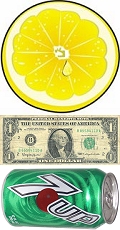
- Choose the most appropriate (reasonably close) answer...
- The diameter of an average-sized lemon would be about:
- The Perimeter of a dollar bill is about:
- The Circumference of an soda can is about:
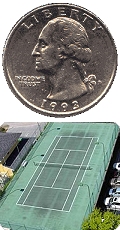 Choose the most appropriate (reasonably close) answer...
Choose the most appropriate (reasonably close) answer...
- The radius of a U.S. quarter is about:
- Which of the following units of Area is the largest?
- 1 sq.yd.
- 1 sq.km.
|
- 1 sq.mi.
- 1 acre
|
- The area of a tennis court is about:
- 500 sq.in.
- 50 sq.yd.
|
- 5000 sq.ft.
- 5 acres
|
- Choose the most appropriate (reasonably close) answer for each of the following
as it corresponds to a (standard-sized) CD or DVD...
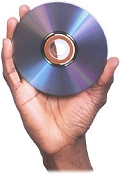
- The diameter of the disc is:
- The disc's circumference is approximately:
- The area of the disc is approximately:
- 1 ft2
- 100 mm2
|
- 100 in2
- 100 cm2
|
 |
Determine (by measurement and calculation) the approximate Area of each of the following
(state the answer in the indicated units):
|
- an average-sized desktop (ft2)
- a credit card (cm2)
- a sheet of notebook paper (in2)
- a U.S. dollar bill (cm2)
|
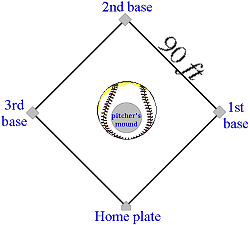 A baseball infield (diamond) is a square where each side measures
90 feet in length.
If a batter hits a homerun, then find each of the following:
A baseball infield (diamond) is a square where each side measures
90 feet in length.
If a batter hits a homerun, then find each of the following:
- the minimum distance he must run?
- his average running speed if it takes 25 sec for him to run around the bases.
Express the answer in miles per hour?
- How far must the catcher (positioned at home plate) throw the baseball in order
throw out a runner who is attempting to steal second base?
 |
A television screen (or picture tube) is a rectangle whose size is given by its
diagonal length. If a TV screen has a length of 17.6" and a
width (or height) of 13.2", then what will be the television set's size?
|
- Using the floorplan in the illustration,
 below right, determine each of the following:
below right, determine each of the following:
- The lengths of the walls which are labeled "x" and "y."
- How much carpet will be needed to cover the floor in square feet?
- If the carpet sells for $12.99 per sq.yd., how much will it cost?
- If padding cost $2.75 per sq.yd. and the installation costs are
$125,
what is the total cost of carpeting the room?
- Baseboard costs $1.09 per (linear) foot,
while the installation costs are $45 for the room.
What will be the total cost of running baseboard around the walls?

- If the Earth is drawn or modeled to a scale of
1 inch = 2000 km,
then what (scaled) distance represents the Earth's:
a. diameter?
b. Circumference?
- a. What is the (equatorial) circumference of the Earth measured in miles?
b. What would be the average (linear) speed of a person/object located at the equator
due to the Earth's daily rotation measured in mi per hr?
- The (average) distance between Sun and the Earth is about 93 × 106
miles. Assuming the path of its annual revolution is a circular one, find the average (linear) speed at which the Earth is
moving while orbiting the Sun? Express the answer in miles per hour.

- The planet Venus
revolves around the Sun in an almost perfectly circular orbit. If the (average) distance between the Sun and
Venus is 108,209,000 kilometers and it completes
one revolution every 224.7 days, then how fast is the planet moving in mph?
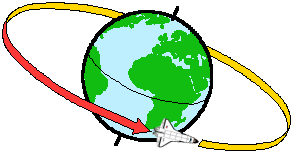 NASA's space shuttles frequently orbit the Earth nearly 200 miles
above the surface (of the Earth), and they travel at speeds of about 17,500 mph.
If a space shuttle circles the Earth at this altitude and speed, then how long will it take it to circumnavigate the Earth once?
NASA's space shuttles frequently orbit the Earth nearly 200 miles
above the surface (of the Earth), and they travel at speeds of about 17,500 mph.
If a space shuttle circles the Earth at this altitude and speed, then how long will it take it to circumnavigate the Earth once?
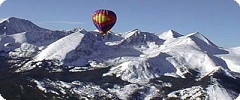 |
A hot-air balloon flies at an altitude of 5000 ft above sea level.
If the balloon travels around in the Earth in a circular path once in a period of two weeks, find the balloon's average
speed (in mph).
|
- A tablecloth for the round table in the illustration (below) needs to overhang the edge by 4".
- How much material (in ft2) is required?

Caution: you cannot buy a round piece of fabric.
- If a local fabric retailer has suitable material at a cost of $5.99 per square yard,
then what will be the cost of the material needed?
- What percentage of the fabric material is not used and what is the cost of the non-used material?
- At Pizza Hut,

 a medium supreme pizza (12" diameter) sold for $15.61 while a large supreme pizza
(16"
a medium supreme pizza (12" diameter) sold for $15.61 while a large supreme pizza
(16" diameter) costs $19.78.
diameter) costs $19.78.
- Find the unit price (e.g., per square inch) for each pizza.
- How much less expensive is the large pizza than the medium pizza per unit area?
 Little
Little Caesar's Pizza restaurant at one time used to offer two square pizzas, where each side was 12 in
long, for $18.99. At the same time, it also sold a single large, round pizza whose diameter was
16 in for $14.99.
Which pizza purchase was the more economical buy? Explain by citing both of their respective unit prices.
Caesar's Pizza restaurant at one time used to offer two square pizzas, where each side was 12 in
long, for $18.99. At the same time, it also sold a single large, round pizza whose diameter was
16 in for $14.99.
Which pizza purchase was the more economical buy? Explain by citing both of their respective unit prices.
 The measure of a bullet's cross-sectional diameter determines its "caliber." For example, a
.22 caliber bullet measures 22/100 inches. How many times larger is the
cross-sectional area of a .38 caliber bullet than a .22 caliber bullet?
The measure of a bullet's cross-sectional diameter determines its "caliber." For example, a
.22 caliber bullet measures 22/100 inches. How many times larger is the
cross-sectional area of a .38 caliber bullet than a .22 caliber bullet?
- How many hectares are equivalent to one square mile?
- Population
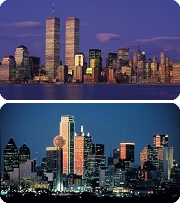 density is defined as the "number of people per unit area" (e.g., per square mile).
density is defined as the "number of people per unit area" (e.g., per square mile).
- New York City covers approximately 301.5 square miles of land and it had a population of about 8.01 million people (in 2000).
What was the population density of NYC in the year 2000?
- Dallas, Texas covers approximately 331.4 square miles of land and it had a population of about 2.22 million people (in 2000).
What was the population density of Dallas in the year 2000?
- Approximately how many times more crowded (dense) was NYC than Dallas (in the year 2000)?
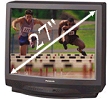
- A Panasonic televsion (model CT-27D31) has a 27-in screen. The "aspect-ratio"
(length to width) for most standard TV screens is 4:3. Find the length and width (height)
for this model television.
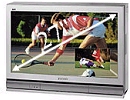 High-definition televisions, with a wide-screen format, are manufactured with an aspect-ratio
(length to width) of 16:9. Find the length and width (height) of a 27"
model television with the HDTV's wide-screen format?
High-definition televisions, with a wide-screen format, are manufactured with an aspect-ratio
(length to width) of 16:9. Find the length and width (height) of a 27"
model television with the HDTV's wide-screen format?
- Grade is defined as the ratio of the change in elevation
(or vertical distance) to the change in horizontal distance.
.png) If a ¾-mi stretch of road has an average 8% grade, then what is the corresponding change in
elevation over this distance.
Express the answer rounded to the nearest whole number of feet.
If a ¾-mi stretch of road has an average 8% grade, then what is the corresponding change in
elevation over this distance.
Express the answer rounded to the nearest whole number of feet.
- The pilot of a commerical airliner determines that his plane is 75 miles from Hilo Airport at
an altitude of 10,000 feet.

- What (horizontal) distance along the surface is the plane from the airport?
- If the pilot maintains a constant descent rate of 500 feet per minute (fpm),
at what speed should the plane be flown to land at the airport. Hint: first find the time it takes to
descend 10,000 ft.
.png) High-capacity recordable CD's (a.k.a. CD-R's) are often sold in 10-packs. The advertisement
shown (at right) shows them on sale at a package price of $3.99.
If each (high-capacity) CD can hold 700 MB of data, find the unit price
in cents per gigabyte.
High-capacity recordable CD's (a.k.a. CD-R's) are often sold in 10-packs. The advertisement
shown (at right) shows them on sale at a package price of $3.99.
If each (high-capacity) CD can hold 700 MB of data, find the unit price
in cents per gigabyte.
- Below are measurements for two different data storage mediums for personal computers.
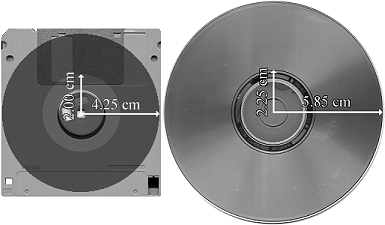 A magnetic (double-density) floppy disk's storage capacity is 1.44 MB
while a standard (optical) compact disc, or CD, has a storage capacity of 650 MB.
A magnetic (double-density) floppy disk's storage capacity is 1.44 MB
while a standard (optical) compact disc, or CD, has a storage capacity of 650 MB.
- Determine the storage capacity density (storage capacity per unit area) for a magnetic floppy disk.
Note that floppy disks are double-sided and thus they utilize both sides of the magnetic disk for data storage.
- Determine the storage capacity density for a standard CD.
- How many times greater is a standard CD's storage capacity density than that of a magnetic floppy disk?

- Measure the circumference of a regulation (conventional) basketball and calculate a value for the
radius. Round the answer to the nearest hundredth of an inch.
Use the result of the previous exercise (#27)
above for exercises #28 - 30, below...
- Mt. Everest (in Asia) extends up to an elevation of 29,035 ft
while the Mariana Trench reaches down to a depth of 36,201 ft.
If the Earth were scaled down to the size of a basketball, how high and how deep would Mt. Everest and the
Mariana Trench, respectively, be? Express the answer in millimeters.
 If the Sun (radius = 432,000 miles) were scaled down to the size of a
basketball, then how large would the Earth’s diameter be? Express the answer in millimeters.
If the Sun (radius = 432,000 miles) were scaled down to the size of a
basketball, then how large would the Earth’s diameter be? Express the answer in millimeters.
- If the Sun were scaled down to the size of a basketball as in the previous exercise (see #9 above),
then how far should it be separated from the Earth in order to represent the actual (average) distance
of approximately 93 million miles? Express the answer in feet.
- Determine how far one can see to the horizon, assuming that the human eye is
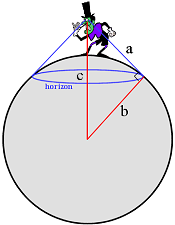 5½ ft above the ground (and that there are not any
obstructions in your field of view), when standing on:
5½ ft above the ground (and that there are not any
obstructions in your field of view), when standing on:
- the ground.
- a ten foot tall platform.
|
Caution: you will most likely need to retain several decimal places (5 or more) throughout your calculations
in order to obtain a reasonable result...
|
|---|
|
|---|
- Show that the formula given by,
d =
 miles,
approximates the distance to the horizon, where h represents the height (feet)
of the observer’s eye above the ground, whenever h is relatively small. miles,
approximates the distance to the horizon, where h represents the height (feet)
of the observer’s eye above the ground, whenever h is relatively small.
|

 Choose the most appropriate (reasonably close) answer...
Choose the most appropriate (reasonably close) answer...

 Determine (by measurement and calculation) the approximate Area of each of the following (state the answer in the indicated units):
Determine (by measurement and calculation) the approximate Area of each of the following (state the answer in the indicated units): A baseball infield (diamond) is a square where each side measures
90 feet in length.
If a batter hits a homerun, then find each of the following:
A baseball infield (diamond) is a square where each side measures
90 feet in length.
If a batter hits a homerun, then find each of the following:
 A television screen (or picture tube) is a rectangle whose size is given by its diagonal length. If a TV screen has a length of 17.6" and a width (or height) of 13.2", then what will be the television set's size?
A television screen (or picture tube) is a rectangle whose size is given by its diagonal length. If a TV screen has a length of 17.6" and a width (or height) of 13.2", then what will be the television set's size? below right, determine each of the following:
below right, determine each of the following:


 NASA's space shuttles frequently orbit the Earth nearly 200 miles
above the surface (of the Earth), and they travel at speeds of about 17,500 mph.
If a space shuttle circles the Earth at this altitude and speed, then how long will it take it to circumnavigate the Earth once?
NASA's space shuttles frequently orbit the Earth nearly 200 miles
above the surface (of the Earth), and they travel at speeds of about 17,500 mph.
If a space shuttle circles the Earth at this altitude and speed, then how long will it take it to circumnavigate the Earth once?


 a medium supreme pizza (12" diameter) sold for $15.61 while a large supreme pizza
(16"
a medium supreme pizza (12" diameter) sold for $15.61 while a large supreme pizza
(16" diameter) costs $19.78.
diameter) costs $19.78.
 Little
Little Caesar's Pizza restaurant at one time used to offer two square pizzas, where each side was 12 in
long, for $18.99. At the same time, it also sold a single large, round pizza whose diameter was
16 in for $14.99.
Which pizza purchase was the more economical buy? Explain by citing both of their respective unit prices.
Caesar's Pizza restaurant at one time used to offer two square pizzas, where each side was 12 in
long, for $18.99. At the same time, it also sold a single large, round pizza whose diameter was
16 in for $14.99.
Which pizza purchase was the more economical buy? Explain by citing both of their respective unit prices.
 The measure of a bullet's cross-sectional diameter determines its "caliber." For example, a
.22 caliber bullet measures 22/100 inches. How many times larger is the
cross-sectional area of a .38 caliber bullet than a .22 caliber bullet?
The measure of a bullet's cross-sectional diameter determines its "caliber." For example, a
.22 caliber bullet measures 22/100 inches. How many times larger is the
cross-sectional area of a .38 caliber bullet than a .22 caliber bullet?
 density is defined as the "number of people per unit area" (e.g., per square mile).
density is defined as the "number of people per unit area" (e.g., per square mile).

 High-definition televisions, with a wide-screen format, are manufactured with an aspect-ratio
(length to width) of 16:9. Find the length and width (height) of a 27"
model television with the HDTV's wide-screen format?
High-definition televisions, with a wide-screen format, are manufactured with an aspect-ratio
(length to width) of 16:9. Find the length and width (height) of a 27"
model television with the HDTV's wide-screen format?
.png)

.png) High-capacity recordable CD's (a.k.a. CD-R's) are often sold in 10-packs. The advertisement
shown (at right) shows them on sale at a package price of $3.99.
If each (high-capacity) CD can hold 700 MB of data, find the unit price
in cents per gigabyte.
High-capacity recordable CD's (a.k.a. CD-R's) are often sold in 10-packs. The advertisement
shown (at right) shows them on sale at a package price of $3.99.
If each (high-capacity) CD can hold 700 MB of data, find the unit price
in cents per gigabyte.


 If the Sun (radius = 432,000 miles) were scaled down to the size of a
basketball, then how large would the Earth’s diameter be? Express the answer in millimeters.
If the Sun (radius = 432,000 miles) were scaled down to the size of a
basketball, then how large would the Earth’s diameter be? Express the answer in millimeters.
 5½ ft above the ground (and that there are not any
obstructions in your field of view), when standing on:
5½ ft above the ground (and that there are not any
obstructions in your field of view), when standing on:
 miles,
approximates the distance to the horizon, where h represents the height (feet)
of the observer’s eye above the ground, whenever h is relatively small.
miles,
approximates the distance to the horizon, where h represents the height (feet)
of the observer’s eye above the ground, whenever h is relatively small.
